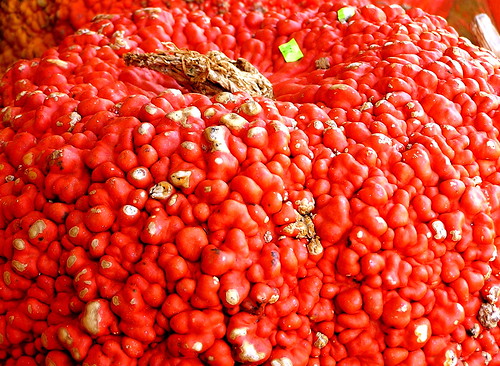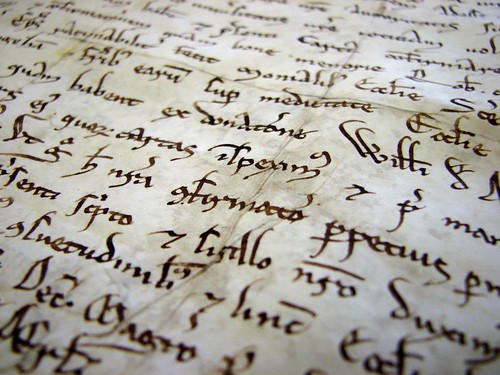
ETC Group
News Release
2 February 2009
www.etcgroup.org
Message to USPTO: Squash the Patent on Bumpy Pumpkins; there's plenty of prior (w)art
On December 4, 2008, while most folks in the United States were eating the last slices of pumpkin pie left over from Thanksgiving dinner, the US Patent & Trademark Office (USPTO) published patent application US20080301830A1 on a Warted pumpkin, “invented” by the Director of Sales & Marketing at Siegers Seed Company in Holland, Michigan, USA. The patent application claims a “warted pumpkin...wherein the outer shell includes at least one wart associated with the outer shell of the body.”
“The claims made by these Michigan 'wart hogs' are outrageous,” says Pat Mooney of ETC Group. “Characteristics vary more for pumpkins than for just about any other plant on earth. Some pumpkins have smooth surfaces; some are barely bumpy and some are way warty. No doubt that's been the case since North American indigenous peoples domesticated them thousands of years ago. Evidence of warty pumpkins goes as far back as the sixteenth century and runs straight through to the twenty-first.”
The patent application includes 25 broad claims covering a range of pumpkins with bumpy surfaces (i.e., 5% to 50% of surface is “warted”), a range of wart sizes relative to the pumpkin's surface and a range of wart colors. The application also claims a range of pumpkin patches (i.e., 25% to 75% of patch contains warty pumpkins). It also claims specific varieties – the application states that the “invention” may “comprise a Cucurbita pepo and/or maxima,” encompassing fruit called gourds and squashes, as well as pumpkins – and it claims plant, seed and tissue of warty pumpkins.
The patent application, if granted, would impose a monopoly position in the U.S. over all Cucurbita pepo and Cucurbita maxima exhibiting a warty surface. “It's déjà vu – like the 'Enola' bean patent all over again,” says ETC's Silvia Ribeiro, referring to the U.S. patent 5,894,079 granted in 1999, which claimed a bean variety of Mexican origin, including its characteristic yellow color. The patent owner, Larry Proctor of Colorado, USA, charged that Mexican farmers were infringing his patent by selling yellow beans in the USA and shipments were stopped at the border. Proctor also sued seed companies and farmers selling or growing the Mexican yellow bean in the USA. Soon after the USPTO granted the patent, ETC Group denounced it as “Mexican bean biopiracy.” The Colombia-based International Center for Tropical Agriculture (CIAT), with support from the UN Food and Agriculture Organization, filed an official challenge in late 2000. The USPTO reexamined the patent and rejected all of its claims back in 2005. But the patent owner appealed the ruling and the patent is still under dispute.[1] “So for almost a decade now – that's half of a patent's lifespan – farmers and seed companies have lost lucrative markets because of a monopoly that everyone – except the patent holder – agrees is technically invalid and morally unjust,” says Ribeiro. “If the USPTO accepts this warty pumpkin patent, it will be another wart on its already blemished record permitting the monopolization of indigenous knowledge.”
An important difference between the 'Enola' bean case and the current case of the warty pumpkin is that the USPTO has not yet granted the patent, though it may decide the application's fate as early as February 4, which is 60 days after its publication. ETC Group and others, including growers and sellers of warted pumpkins in the U.S., have sent the USPTO documentation of the existence of warted pumpkins dating well before – in some cases centuries before – Siegers Seed Company's “invention” timeline, which begins in 2002. (See PDF at http://www.etcgroup.org/en/materials/publications.html?pub_id=721 for illustrations.) There's such a plethora of “prior art” that even the patent-happy USPTO shouldn't be able to overlook it. ETC Group also raised its concerns about the pending patent with The World Vegetable Center (AVRDC) based in Tainan, Taiwan. AVRDC holds accessions of Cucurbita pepo and maxima in its gene bank – some from the U.S. – and a U.S. patent could have implications for the Center's Cucurbit plant breeding and germplasm exchange. “We know from the 'Enola' bean patent debacle that even an obviously bad patent can still live a long and destructive life,” says Kathy Jo Wetter from ETC Group's U.S. office. “The USPTO should reject all 25 claims of the patent application on warted pumpkins.”
Note:
[1] See ETC Group, “Hollow Victory: Enola Bean Patent Smashed At Last (Maybe),” 29 April 2008, available on the Internet: http://www.etcgroup.org/en/materials/publications.html?pub_id=683
For more information, contact:
Pat Mooney - ETC Group (Ottawa, Canada) etc@etcgroup.org
Phone: +1 613 2412267 Cell: +1 613 240 0045
Silvia Ribeiro – ETC Group (Mexico City) silvia@etcgroup.org
Phone: 011 52 5555 6326 64
Kathy Jo Wetter - ETC Group (Durham, NC, USA) kjo@etcgroup.org
Phone: +1 919 688 7302



2 comments:
Thanks for this post - personally I think this is perhaps the most important issue the human species faces at this time. Can we really continue to allow the patenting of life forms? Can we figure out a way to reasonably remunerate the efforts of those who breed our domestic plants and animals that will foster responsible stewardship? (Responsibility to a long term better quality of life for people, NOT responsibility to stock-holders)
Great blog, and a really important issue. Biopiracy needs to be called as it is, stealing and comodifiying our common human inheritence.
Looking forward to reading more...
Post a Comment